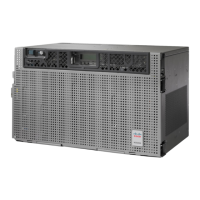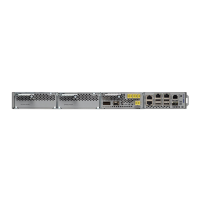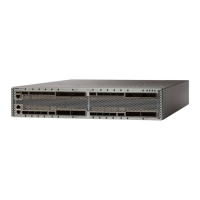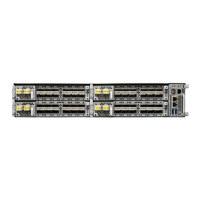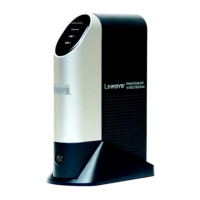Invisible laser radiation could be emitted from the end of the unterminated fiber cable or connector.
Do not stare into the beam directly with optical instruments. Viewing the laser output with certain
optical instruments (for example, eye loupes, magnifiers, and microscopes) within a distance of 100
mm could pose an eye hazard. Statement 1056
Warning
Before disconnecting any optical amplifier card fiber for troubleshooting, ensure that the optical amplifier
card is unplugged.
Note
If no site practice exists for cleaning fibers, complete the procedure in the Maintain the Node chapter of
the Configuration guide.
Note
f) If the alarm condition persists even after the cabling has been checked and fixed, replace the 32DMX-O card (refer
to the Upgrade, Add, and Remove Cards and Nodes chapter of the Configuration guide. Before replacing the card,
log into the Technical Support Website at http://www.cisco.com/techsupport for more information or call Cisco TAC
(1 800 553-2447) in order to report a service-affecting problem).
High-performance devices on this card can get hot during operation. To remove the card, hold it by
the faceplate and bottom edge. Allow the card to cool before touching any other part of it or before
placing it in an antistatic bag. Statement 201
Warning
Scenario C2 - OPWR-LowDEGrade Alarm
SUMMARY STEPS
1. Verify the alarm validity:
2.
3. Verify the proper cabling of the COM-RX port (the common input port for all of the drop channels) of
the alarmed 32DMX-O or 40DMX:
DETAILED STEPS
Step 1 Verify the alarm validity:
a) Identify the DWDM nodes where the alarmed card is seated.
b) Double-click the 32DMX-O or 40DMX card.
c) Click Alarms.
d) Verify that an Optical Power Degrade Low Loss of incoming Payload (OPWR-LDEG) alarm is present on the
CHAN-TX port.
e) Click the Synchronize button at the bottom left of the window.
f) If the alarm is correctly reported, move to Scenario C2 - OPWR-LowDEGrade Alarm, on page 95. If not, close the
CTC application, delete the CTC cache, and open the CTC connection again.
If the alarm inconsistency persists, log into the Technical Support Website at
http://www.cisco.com/cisco/web/support/index.html for more information or call Cisco TAC (1 800
553-2447) in order to report a service-affecting problem.
Note
Step 2 Click Circuits and retrieve the node, card, and port information for to the alarmed channel from the Source field of
the OCHNC circuit.
a)
Cisco NCS 2000 series Troubleshooting Guide, Release 11.0
95
General Troubleshooting
Scenario C2 - OPWR-LowDEGrade Alarm
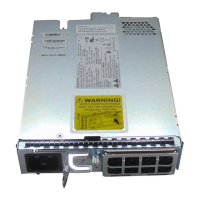
